A flagstone patio is a timeless addition to any outdoor space, offering natural beauty, durability, and versatility. Whether you’re a seasoned DIY enthusiast or a first-time homeowner, this guide will walk you through every step of building a flagstone patio, from planning and material selection to installation and maintenance. By following these detailed instructions, you can create a stunning outdoor oasis that enhances your home’s aesthetic and functionality.
1. Planning and Design
The planning and design phase is the foundation of a successful flagstone patio project. Taking the time to carefully assess your space, choose the right materials, and create a detailed plan will save you time, money, and effort during the installation process. Below is an expanded and detailed breakdown of this critical phase.
1.1 Assessing Your Space
Before starting, evaluate your yard to determine the best location for your patio. Consider factors such as sunlight, drainage, and proximity to your home. Use stakes and string to outline the patio’s shape and size, ensuring it complements your landscape and meets your needs.
- Sunlight: Choose a spot that receives adequate sunlight or shade, depending on your preferences.
- Drainage: Ensure the area slopes away from your home to prevent water pooling.
- Proximity: Consider how close the patio will be to doors, windows, and outdoor utilities like grills or fire pits.
1.2 Choosing the Right Flagstone
1.2.1 Types of Flagstone
- Slate: Known for its durability and natural color is ideal for high-traffic areas and formal designs.
- Quartzite: Extremely hard and resistant to fading, quartzite is suitable for harsh climates and modern designs.
- Sandstone: Available in a variety of colors, including red, yellow, and brown, sandstone is softer and easier to cut but may require more maintenance.
- Limestone: Offers warm, earthy tones and a smooth texture, perfect for a rustic or traditional look.
-
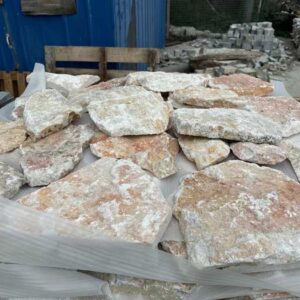 Natural Loose Random Stone Veneer & Wall Cladding
Natural Loose Random Stone Veneer & Wall Cladding -
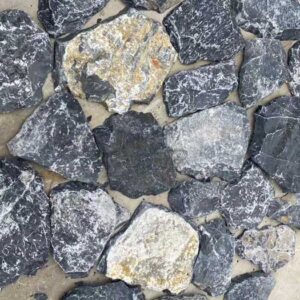 Free Form Natural Stone Veneer & Loose Wall Cladding
Free Form Natural Stone Veneer & Loose Wall Cladding -
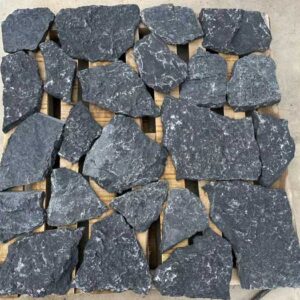 Free Form Natural Loose Stone Veneer Wall Cladding
Free Form Natural Loose Stone Veneer Wall Cladding -
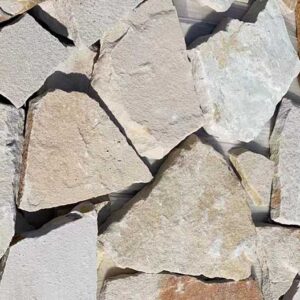 Factory Price Natural White Sandstone Random Loose Stone Veneer for Wall Cladding
Factory Price Natural White Sandstone Random Loose Stone Veneer for Wall Cladding -
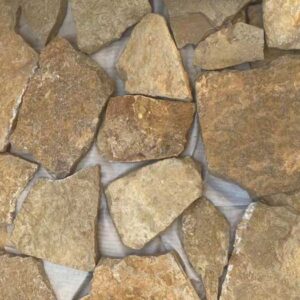 Rusty Quartzite Random Loose Stone Veneer & Wall Cladding
Rusty Quartzite Random Loose Stone Veneer & Wall Cladding -
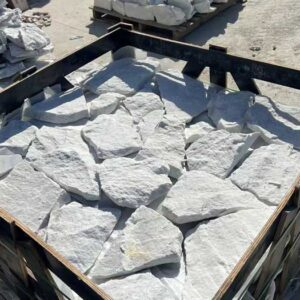 Exterior White Quartzite Loose Stone Veneer & Random Wall Cladding
Exterior White Quartzite Loose Stone Veneer & Random Wall Cladding -
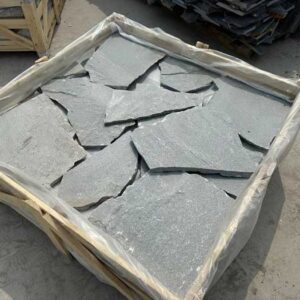 Grey Natural Loose Stone Veneer & Random Wall Cladding
Grey Natural Loose Stone Veneer & Random Wall Cladding -
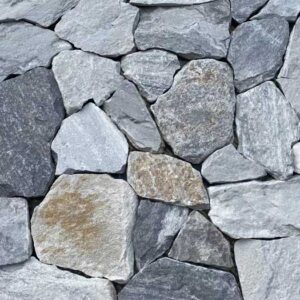 Blue Quartzite Free Form Loose Stone Veneer & Wall Cladding
Blue Quartzite Free Form Loose Stone Veneer & Wall Cladding
1.2.2 Thickness and Size
- Thickness: Choose flagstones that are at least 1.5 to 2 inches thick for durability. Thicker stones are better for high-traffic areas or regions with freeze-thaw cycles.
- Size and Shape: Flagstones come in irregular or uniform shapes. Irregular stones create a natural, organic look, while uniform stones are easier to lay in a pattern.
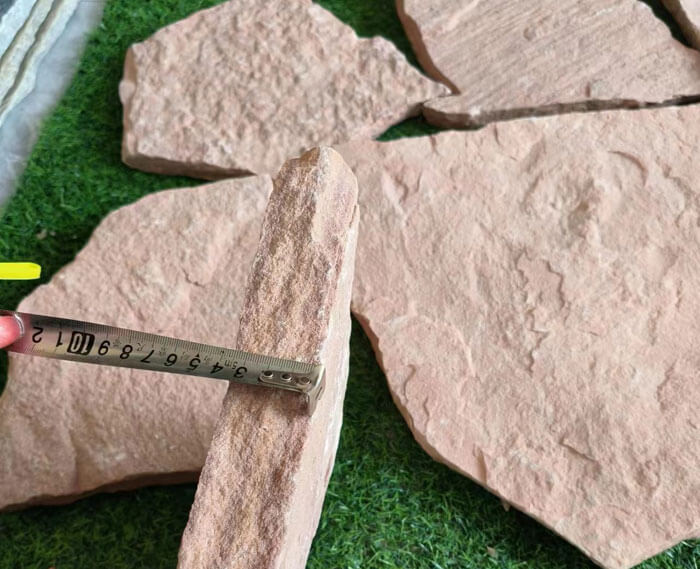
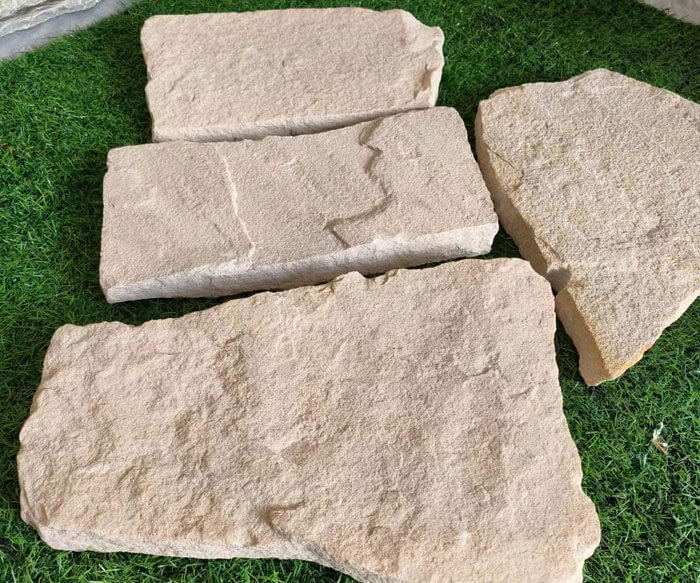
1.2.3 Color and Texture
Texture: Smooth stones are easier to walk on, while textured stones provide better traction and a more natural appearance.
Color: Consider how the color of the flagstone complements your home’s exterior and landscape. Neutral tones like gray and beige are versatile, while bold colors like red or blue can make a statement.
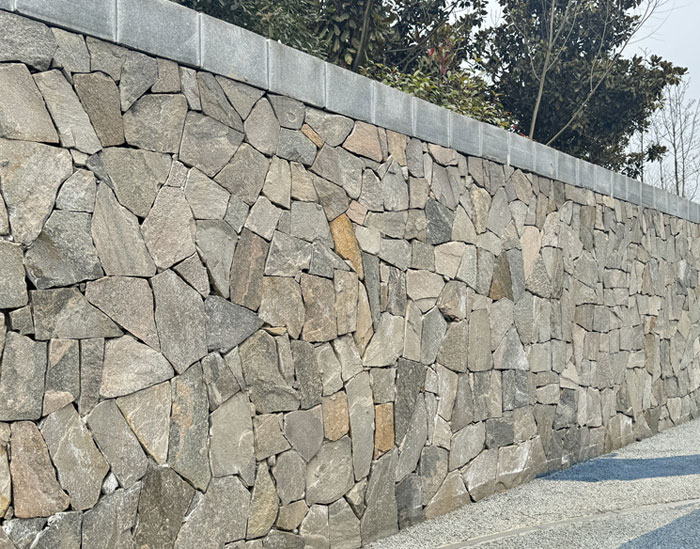
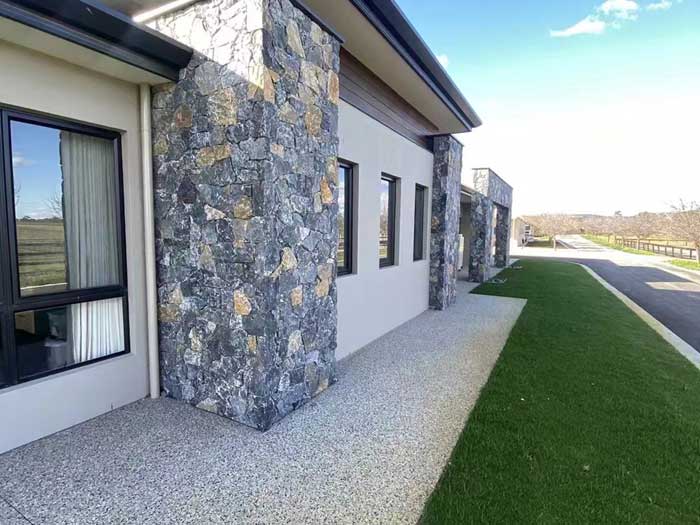
1.3 Calculating Materials
1.3.1 Measuring the Area
Measure your patio area to estimate the amount of flagstone, gravel, and sand needed. Typically, one ton of flagstone covers 80-120 square feet, depending on thickness. Add 10-15% extra for cuts and waste.
1.3.2 Estimating Materials
- Flagstone: One ton of flagstone typically covers 80-120 square feet, depending on thickness. Add 10-15% extra for cuts and waste.
- Gravel: Calculate the volume of gravel needed for the base (4-6 inches deep). One cubic yard of gravel covers about 100 square feet at 3 inches deep.
- Sand: Estimate 1-2 inches of sand for leveling. One cubic yard of sand covers about 100 square feet at 1 inch deep.
- Landscape Fabric: Purchase enough fabric to cover the entire patio area, with extra for overlapping edges.
2. Tools and Materials
2.1 Essential Tools
- Shovel, Rake, and Wheelbarrow: For excavation and material transport.
- Plate Compactor or Hand Tamper: For compacting the gravel and sand base.
- Rubber Mallet: For adjusting stones without damaging them.
- Level and Measuring Tape: For ensuring a flat and even surface.
- Angle Grinder with Diamond Blade: For cutting stones to fit.
- Safety Gear: Gloves, goggles, and knee pads for protection.
2.2 Required Materials
- Flagstones: Choose based on your design and climate.
- Crushed Gravel or Limestone: For the base layer.
- Sand or Polymeric Sand: For leveling and joint filling.
- Landscape Fabric: To prevent weed growth.
- Edging Materials: Plastic, metal, or stone for borders.
3. Site Preparation
3.1 Clearing the Area
- Remove Vegetation and Debris: Clear the designated area of grass, weeds, roots, rocks, and any other obstructions. Use a shovel, rake, or sod cutter for efficient removal.
- Level the Ground: Ensure the ground is level and slopes slightly (1/8 inch per foot) away from your home for proper drainage.
3.2 Excavation
- Depth: Excavate to a depth of 6-8 inches, accounting for the base layers (gravel, sand) and the thickness of the flagstones.
- Soil Stability: Test the soil for stability. If the soil is unstable, add a layer of compacted gravel or sand to create a solid foundation.
3.3 Base Layer Installation
- Gravel Base: Spread a 4-6 inch layer of crushed gravel or limestone. Compact it thoroughly using a plate compactor or hand tamper to ensure stability.
- Landscape Fabric (Optional): Lay landscape fabric over the gravel to prevent weed growth and improve drainage.
- Sand Layer: Add a 1-2 inch layer of coarse sand or decomposed granite for leveling. Use a screed board to create a smooth, even surface.
4. Installing the Flagstone
4.1 Dry Layout (Planning the Pattern)
- Purpose: Before permanently setting the stones, arrange them on the prepared sand bed to visualize the layout and ensure proper spacing.
- Process:
- Start from one corner and work outward, placing the largest stones first.
- Experiment with different patterns (e.g., random, geometric, or herringbone) to achieve your desired look.
- Leave 1/4 to 1/2 inch gaps between stones for joint filling.
- Tips:
- Use a chalk line or string to mark guidelines for straight edges or patterns.
- Avoid placing stones with sharp edges or uneven surfaces in high-traffic areas.
4.2 Cutting and Shaping Stones
- Tools Needed:
- Angle grinder with a diamond blade or masonry saw.
- Safety gear (gloves, goggles, and dust mask).
- Process:
- Measure the space where a stone needs to fit.
- Mark the cutting line on the stone using chalk or a marker.
- Cut along the line using the angle grinder or saw, applying steady pressure.
- Smooth rough edges with the grinder or a rubbing stone.
- Tips:
- Always cut stones outdoors or in a well-ventilated area to avoid inhaling dust.
- Practice cutting on scrap pieces before working on your main stones.
4.3 Setting the Stones
- Process:
- Begin placing the flagstones on the sand bed, starting from one corner and working outward.
- Use a rubber mallet to gently tap each stone into place, ensuring it is level and securely seated.
- Check the level frequently using a spirit level or straightedge.
- Adjust the sand bed as needed to achieve a flat and even surface.
- Tips:
- Place thicker stones in high-traffic areas for added durability.
- Use a wooden board and rubber mallet to avoid damaging the stones during placement.
4.4 Filling the Joints
- Materials:
- Polymeric sand (recommended for dry set installations).
- Mortar (optional for a more permanent installation).
- Process for Polymeric Sand:
- Sweep the sand into the gaps between the stones, ensuring it fills the joints completely.
- Use a broom or brush to remove excess sand from the surface.
- Mist the patio with water using a garden hose to activate the binding agents in the sand.
- Allow the sand to dry and harden for 24-48 hours.
- Process for Mortar:
- Mix mortar according to the manufacturer’s instructions.
- Use a pointing trowel to press the mortar into the gaps between the stones.
- Smooth the surface with the trowel or a jointing tool.
- Allow the mortar to cure for 24-48 hours before walking on the patio.
- Tips:
- Choose polymeric sand in a color that complements your flagstones for a cohesive look.
- For mortar installations, work in small sections to prevent the mortar from drying out too quickly.
4.5 Final Adjustments
- Leveling: After setting all the stones, check the entire patio for levelness. Adjust any uneven stones by lifting them and adding or removing sand underneath.
- Compacting: Use a plate compactor or hand tamper to gently compact the stones and ensure they are firmly seated in the sand bed.
- Cleaning: Remove any excess sand, mortar, or debris from the surface using a broom or leaf blower.
Top 10 Crazy Paving Flagstone Wholesalers in Australia
5. Finishing Touches
The finishing touches are crucial for ensuring your flagstone patio is not only functional but also visually appealing and long-lasting. Below is a detailed breakdown of the steps involved in completing your flagstone patio project.
5.1 Edging
5.1.1 Choosing the Right Edging Material
- Plastic Edging: Lightweight, flexible, and easy to install. Ideal for curved patios.
- Metal Edging: Durable and long-lasting, often made of steel or aluminum. Provides a clean, modern look.
- Stone or Brick Edging: Matches the flagstone for a cohesive design. Adds a natural, rustic charm.
5.1.2 Installing the Edging
- Mark the Perimeter: Use stakes and string to outline the patio’s edge.
- Dig a Trench: Excavate a shallow trench (2-3 inches deep) along the perimeter to accommodate the edging material.
- Place the Edging: Insert the edging material into the trench, ensuring it sits flush with the ground and aligns with the patio’s edge.
- Secure the Edging: Use stakes or anchors to fix the edging in place. For stone or brick edging, use mortar to bond the pieces together.
5.2 Cleaning and Sealing
5.2.1 Cleaning the Patio
- Remove Debris: Sweep away loose dirt, leaves, and sand using a broom or leaf blower.
- Deep Cleaning: For stubborn stains or algae, scrub the surface with a mixture of mild detergent and water. Use a stiff-bristle brush or a pressure washer on a low setting to avoid damaging the stones.
- Rinse Thoroughly: Rinse the patio with clean water to remove any cleaning residue.
5.2.2 Sealing the Flagstones
- Why Seal?: Sealing protects the stones from stains, UV damage, and weathering. It also enhances the color and texture of the flagstones.
- Choosing a Sealer: Select a breathable, penetrating sealer designed for natural stone. Avoid film-forming sealers, as they can trap moisture and cause discoloration.
- Application Process:
- Ensure the patio is completely dry before applying the sealer.
- Use a roller, sprayer, or brush to apply the sealer evenly across the surface.
- Allow the sealer to penetrate for 10-15 minutes, then wipe off any excess with a clean cloth.
- Let the sealer cure for 24-48 hours before using the patio.
5.3 Landscaping and Drainage
5.3.1 Landscaping Around the Patio
- Plants and Shrubs: Add greenery around the patio to soften the edges and create a natural transition to the yard. Choose low-maintenance plants that thrive in your climate.
- Ground Cover: Plant creeping thyme, moss, or sedum between the flagstones for a lush, natural look. These plants also help prevent weed growth.
- Lighting: Install outdoor lighting (e.g., solar-powered path lights or string lights) to enhance the patio’s ambiance and functionality at night.
5.3.2 Ensuring Proper Drainage
- Check the Slope: Confirm that the patio slopes away from your home (1/8 inch per foot) to prevent water pooling.
- Add Drainage Features: If necessary, install a French drain or channel drain to divert water away from the patio.
- Gravel or Mulch Borders: Use gravel or mulch around the patio’s perimeter to improve drainage and reduce erosion.
5.4 Final Inspections and Adjustments
- Check for Levelness: Use a level to ensure the patio surface is even and slopes correctly.
- Inspect Joints: Refill any gaps in the joints with polymeric sand or mortar as needed.
- Test Stability: Walk across the patio to ensure the stones are secure and do not wobble.
5.5 Maintenance Tips
- Regular Cleaning: Sweep the patio weekly to remove debris and prevent stains.
- Reapply Sealer: Reapply stone sealer every 2-3 years to maintain protection and appearance.
- Repair Cracks or Shifting Stones: Address any cracks or uneven stones promptly to prevent further damage.
6. Maintenance Tips for Your Flagstone Patio
Proper maintenance is essential to keep your flagstone patio looking beautiful and functioning well for years to come. Below is a comprehensive guide to maintaining your patio, including regular cleaning, seasonal care, and addressing common issues.
6.1 Regular Cleaning
6.1.1 Sweeping and Debris Removal
- Frequency: Sweep the patio weekly to remove dirt, leaves, and other debris.
- Tools: Use a stiff-bristle broom or a leaf blower for efficient cleaning.
- Benefits: Prevents debris from accumulating in the joints, which can lead to weed growth or staining.
6.1.2 Deep Cleaning
- Frequency: Perform a deep clean every 3-6 months, depending on usage and weather conditions.
- Steps:
- Rinse the patio with a garden hose to remove loose dirt.
- Scrub the surface with a mixture of mild detergent and water using a stiff-bristle brush.
- For stubborn stains or algae, use a pressure washer on a low setting or a specialized stone cleaner.
- Rinse thoroughly with clean water to remove any cleaning residue.
6.2 Joint Maintenance
6.2.1 Refilling Joints
- Polymeric Sand: Check the joints annually and refill with polymeric sand if gaps appear. Sweep the sand into the joints and mist with water to activate the binding agent.
- Mortar Joints: Inspect mortar joints for cracks or crumbling. Repair by removing damaged mortar and reapplying fresh mortar with a pointing trowel.
6.2.2 Weed Control
- Prevention: Use polymeric sand or apply a weed inhibitor to prevent weed growth in the joints.
- Removal: Pull weeds by hand or use a natural weed killer to avoid damaging the stones.
6.3 Sealing and Protection
6.3.1 Reapplying Sealer
- Frequency: Reapply a breathable stone sealer every 2-3 years to protect against stains, UV damage, and weathering.
- Steps:
- Clean the patio thoroughly and allow it to dry completely.
- Apply the sealer evenly using a roller, sprayer, or brush.
- Wipe off excess sealer with a clean cloth and allow it to cure for 24-48 hours.
6.3.2 Stain Prevention
- Immediate Cleanup: Wipe up spills (e.g., oil, wine, or food) immediately to prevent staining.
- Protective Mats: Use mats or rugs in high-traffic areas or under outdoor furniture to reduce wear and tear.
6.4 Seasonal Care
6.4.1 Winter Maintenance
- Snow Removal: Use a plastic shovel or broom to remove snow. Avoid metal shovels or ice melt products, as they can damage the stones.
- Freeze-Thaw Cycle: Ensure proper drainage to prevent water from pooling and freezing, which can cause cracks or shifting stones.
6.4.2 Summer Maintenance
- Heat Protection: Avoid placing hot objects (e.g., grills or fire pits) directly on the stones. Use heat-resistant pads or stands.
- UV Protection: Reapply sealer to protect against fading caused by prolonged sun exposure.
6.5 Addressing Common Issues
6.5.1 Cracked or Broken Stones
- Repair: Replace damaged stones by carefully lifting them, leveling the base, and resetting them with sand or mortar.
6.5.2 Uneven or Sunken Stones
- Leveling: Lift the stones, add or remove sand or gravel underneath, and reset them to ensure a level surface.
6.5.3 Water Pooling
- Drainage Check: Ensure the patio slopes away from your home (1/8 inch per foot). Add drainage features like a French drain if necessary.
6.6 Long-Term Care
- Inspect Regularly: Check the patio annually for signs of wear, such as loose stones, cracks, or uneven surfaces.
- Professional Help: For extensive repairs or resealing, consider hiring a professional to ensure the job is done correctly.
By following these maintenance tips, you can preserve the beauty and functionality of your flagstone patio for decades. Regular care not only enhances its appearance but also prevents costly repairs down the line. Enjoy your outdoor space with confidence, knowing it’s well-maintained and ready for years of use!
Conclusion
Building a flagstone patio is a rewarding project that adds value and beauty to your home. By following this comprehensive guide, you can create a durable and visually stunning outdoor space tailored to your needs. Whether you choose a dry set or mortar set installation, the key to success lies in careful planning, proper preparation, and attention to detail. Enjoy your new patio as a place to relax, entertain, and connect with nature!
For more detailed instructions and expert advice, refer to the sources cited throughout this guide. Happy building!

